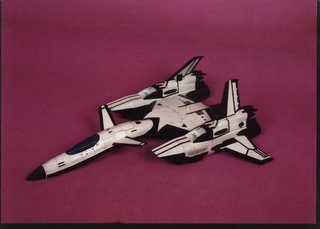SUPERCAVITATION

What is SUPERCAVITATION?
Supercavitation is the naval revolution which is set to change underwater warfare from a slow, silent and stealthy game of cat and mouse to a high speed, fight to the death.
Since their invention many years ago, ocean going vessels have always been plagued by the turbulence they create. water is around 1000 times thicker than air, and logically induces 1000 times more drag on any object traveling through it.
The results are... slow speeds. conventional surface ships and submarine speed have always been limited to no more than 40 or 50 mph.
Supercavitation removes all these limits on speed...
Supercavitation occurs when an object moving through water reaches speeds in excess of 100 knots (110mph). if the object has a correctly shaped 'CAVITATOR' on it's nose, a bubble of air starts to form around the object... this extends to cover the entire object, and hence the object is no longer moving through water, but through air, which creates but a fraction of the friction! hence craft will be capable of racing at high speeds on or below the surface of the ocean.
Traveling in a bubble kills off all traditional marine propulsion techniques. propellers spinning in air won't be much good after all... the only engines that will work are the same ones which power our ships to the stars... rocket engines.
Supercavitation crafts will be high speed, highly maneuverable, rocket powered fighters.
IT HAS ALREADY BEGUN!!!
The late 1970's saw the invention of the SHKVAL... a russian torpedo capable of speeds of 500km/h (over 300mph!).
An inproved shkval has since entered service and high speed supercavitational mine clearing cannons and torpedoes are alredy well advanced in development.
In 2005, the first german supercavitating torpedo was developed, known as the 'BARRACUDA' it travels at over 800km/h. no more straight shooter, the barracuda is a guided torpedo that is capable of maneuvering its way towards a target.
The face of combat in the world's oceans is set to change forever.
The Science:
Cavitation
Tradeitional cavitation is a problem which has plagued ship designers for decades. it's caused by fast moving objects in water with sharp edges, such as propellers, spinning quickly and causing an actual change in the physical state of the water around them.
The faster the propeller spins, the lower the water pressure around it becomes. if this pressure falls fast enough, then the water reaches it's 'VAPOR PRESSURE', at which, like boilling water, it vaporizes and forms small bubbles of gas.
Unlike bubbles caused by heat though, these bubbles are unstable, and implode violently when their pressure changes. this implosion can cause extensive damage to vessels hulls. to submarines, which still cling to the notion of 'run silent run deep' this kind of enemy alerting noise could prove deadly.
Supercavitation
Rather than fighting the process of cavitation, exploits it to create a near frictionless environment for a craft to travel in. insted of trying to avoid or minimize cavitation, it attempts to create a renewable large bubble, a 'supercavitational bubble' which is designed to tottaly envelope the craft and thus make it travel within the bubble of air.
The breakthrough speed at which this occurs is 180km/h, or 100knots. at this speed with a correctly crafted nose, the pressure of the water at the tip of the vessel would drop sharply, and start to change the water coming into contact with the nose from its liquid form into gaseous one. as this happens a bubble will begin to form, exlending back along the vessel.
A supercavitational vessel would need to have a nose with a specially designed 'cavitator' which extends the bubble and makes it stable. the size and the length of the bubble is dependant on speed, although it size can be increased by 'ventilated supercavitation'.
in ventilated supercavitation, air is pumped into the bubble to increase it's size and ensure that it covers the entire supercavitating projectile. the shkval for example, usses ventilated supercavitation by redirecting part of the exhaust gases from its rocket engines through outlets near the nose of the torpedo.
Thus the vessel can move on or beneath the waves safely at high speed. supercavitation represents the 1st step in the underwater revolution which is fast approaching. as funds pour into supercavitational research around the world it becomes more and more clear that the control of supercavitation will soon equate to control of the seas.
"from DEEP ANGEL"
I think that supercavitation well realy become the way to cntrol the seas in the near future!
it's super-cool, I think I well make a model of a supercavitatinal submarine ;) after studing the Anomaly ofcourse...
ABED.
Amman-Jordan.


